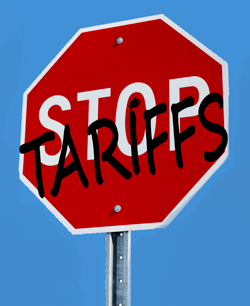By SEMA Washington, D.C., Staff
 The Trump Administration’s 10% tariffs imposed on $200 billion worth of products from China will increase to 25% on January 1, if the United States and China fail to resolve their trade disputes. |
The Trump Administration has not established a process for requesting product exclusions from the 10% tariffs imposed on $200 billion worth of products from China that took effect on September 24. The tariffs will increase to 25% on January 1, if the United States and China fail to resolve their trade disputes.
The Trump Administration is allowing companies to seek exclusion requests for tariffs previously imposed on $50 billion worth of goods. Nevertheless, the bar for being granted exclusion relief is high. It must be demonstrated that the product is only available from China, the duties will cause severe economic harm, and the good is strategically important. The imposition dates for the $50 billion tariffs were staggered: July 6 for $34 billion and August 23 for $16 billion.
Here are lists and exclusion request links:
$34 billion: 818 Harmonized Tariff Code listings, including miscellaneous metal and rubber parts for auto equipment, machinery, tools, measurement and medical devices. Exclusion requests due October 9: Docket USTR-2018-0025.
$16 billion: 279 Harmonized Tariff Code listings, including many types of plastics. Exclusion requests due December 18.
The 10% tariffs on $200 billion worth of Chinese products cover 5,745 tariff lines and include many auto parts, from engines and metal fasteners to wheels, tires, steering wheel components, rubber gaskets, transmission belts, brake pads, windshields and suspension springs.
China has responded to the U.S. tariffs with its own tariffs. They mostly apply to agricultural products, but the most recent retaliation includes a 10% levy on many types of U.S. tires, synthetic rubber and butadiene.
It is unclear if exclusion requests will be allowed if the tariffs levels rise to 25% on January 1, since Trump Administration officials are encouraging the U.S. trade community to alter their supply chains. While SEMA supports the administration’s efforts to create fair and reciprocal trade, and to protect intellectual property rights, the association remains concerned that tariffs are not accomplishing this shared objective.
For more information, contact Stuart Gosswein at stuartg@sema.org.





